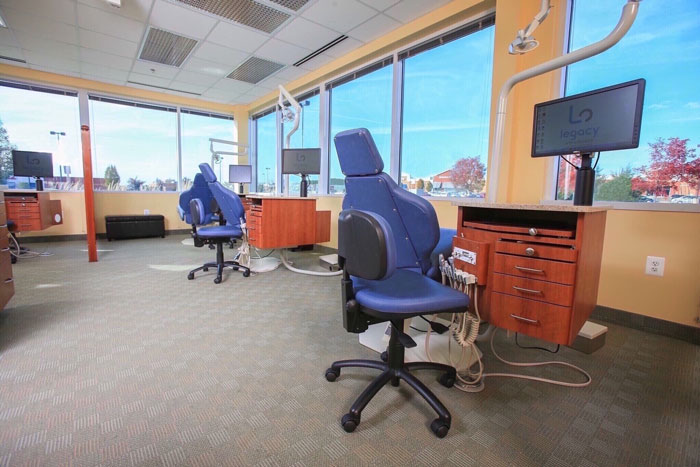Our Legacy Orthodontics Statements
Our Legacy Orthodontics Statements
Blog Article
Some Known Incorrect Statements About Legacy Orthodontics
Table of ContentsThe 5-Second Trick For Legacy OrthodonticsSome Ideas on Legacy Orthodontics You Need To KnowAn Unbiased View of Legacy OrthodonticsGetting My Legacy Orthodontics To WorkThe Ultimate Guide To Legacy Orthodontics
At Advanced Orthodontics, we give individuals with a alternative treatment experience. On top of that, we provide flexible therapy routines, adaptable payment alternatives and a fun, enjoyable experience. invisalign. Call ( 480) 357-4900 today for additional information and routine an appointment.An orthodontist is a dental professional trained to detect, avoid, and deal with teeth and jaw abnormalities. They deal with existing conditions and are trained to determine issues that may develop in the future. Orthodontists deal with individuals of any ages, from children to grownups. People often link an excellent smile with health.
Malocclusion, or misaligned teeth, can bring about dental problems, including dental caries, periodontal condition, and challenging or painful eating. Not everyone is birthed with straight teeth. If you have a bad bite or large spaces between your teeth, you might intend to get in touch with a dental expert concentrating on orthodontic treatment.
The Buzz on Legacy Orthodontics
( Image Credit Rating: DigitalVision/Getty Images) Orthodontists make use of repaired and detachable dental gadgets, like braces, retainers, and bands, to alter the setting of teeth in your mouth. Orthodontic therapy is for dental abnormalities, consisting of: Misaligned teethBite issues, like an overbite or an underbiteCrowded teeth or teeth that are too much apartJaw misalignmentThe goal of orthodontic therapy is to improve your bite.
A healthy and balanced bite guarantees you can consume, chew, and speak effectively. While you might consider orthodontists as mainly for youngsters or young adults who require dental braces, they can deal with dental problems at any kind of age. Orthodontists go to university, dental institution, and orthodontic school. After college graduation, they spend 2 or 3 years in an orthodontic residency program.
, yet not all dental professionals are orthodontists. They concentrate on 2 locations: How to effectively and safely move teeth How to effectively direct development in the teeth, jaw, and faceOnce an orthodontist has actually finished training, they have the option to become board accredited.
Things about Legacy Orthodontics
Imbalance, or malocclusion, is one of the most common reason people see an orthodontist. It is genetic and is the outcome of dimension differences in between the upper and reduced jaw or between the jaw and teeth. Malocclusion results in tooth congestion, a twisted jaw, or uneven bite patterns. Malocclusion is typically treated with: Your orthodontist attaches metal, ceramic, or plastic square bonds to your teeth.
Some people require a headwear to aid relocate teeth right into line with pressure from outside the mouth. A retainer is a customized device that maintains your teeth in area.
They can develop added area in the mouth without having to pull teeth. Orthodontists utilize wires, surgical screws, or plates to support your jaw bone.
You may need to see an orthodontist if you have: Crowding or not sufficient area for every one of your teethOverbite, when your upper teeth come by your bottom teethUnderbite, when your base teeth are also far forwardSpacing or concerns with gapsCrossbite, which is when your top teeth fit behind your base teeth when your mouth is closedOpen bite or an upright void in between your front bottom and upper teethMisplaced midline, when the center of your bottom and upper teeth don't align Remedying an oral malocclusion can: Make attacking, eating, and talking easierImprove the balance of our face and your overall appearanceEase discomfort from temporomandibular joint conditionsDifferent your teeth and make them simpler to clean up, aiding protect against tooth decay or dental caries It's usually a dental professional that first notifications misaligned teeth during a routine exam.
Some Known Incorrect Statements About Legacy Orthodontics

During your very first orthodontic examination, you'll likely have: A dental examPhotos taken of your face and smileDental X-raysPanoramic (360 degree) X-rays of your face and headImpressions to develop molds of your teethThese examinations will assist your orthodontist understand just how to proceed with your therapy. orthodontist. An orthodontist is a dental practitioner who's had training to treat your teeth and jaw
An orthodontist is concentrated on your bite, so something like a damaged tooth would certainly be dealt with by a dentist. Orthodontists are focused on your bite, or the method your teeth fit with each other, and the straightness of your teeth.
Ever asked yourself exactly how stars constantly seem to have flawlessly lined up teeth? The response typically depends on the skilled hands of an orthodontist. Yet just what does an orthodontist do? Orthodontists are oral specialists that concentrate on fixing irregularities in the teeth and jaws. Their competence exceeds simply developing a lovely smile; it reaches click here now improving your general dental wellness and feature.
Top Guidelines Of Legacy Orthodontics

, orthodontists have a varied toolkit at their disposal. These reliable dental braces utilize a system of brackets adhered to the teeth and linked by cables.
These removable trays are custom-made to progressively move the teeth's placement. In instances of slim jaws, palatal expanders can be utilized to create area for appropriate tooth positioning.
Report this page